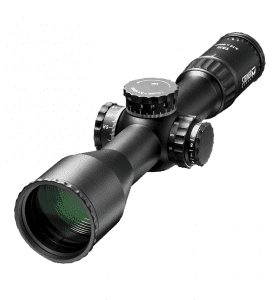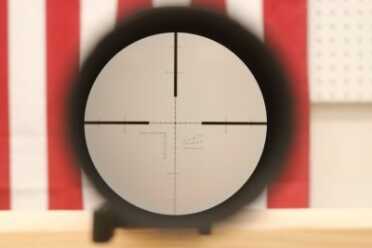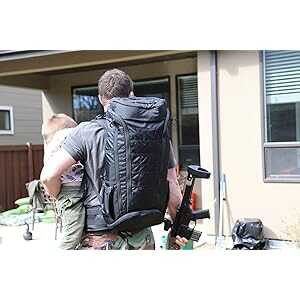The first thing that comes to mind when someone says Steiner to most U.S. veterans is the ubiquitous Steiner 10×50 binoculars. These were a staple in every unit I ever served in and had a great reputation for clarity and toughness. German glass is legendary in sniper circles for clarity and lack of imperfections. I was never issued a Steiner, but I had enough of the other Kraut options to know I should jump at the chance to test a myriad of Steiner glass. Imagine my surprise to learn that the new T5 line of scopes is actually made in the United States, in Greeley, Colorado.
The T5 scopes are designed in Germany and the internals are produced stateside. However, the lenses still come from Germany. With a track record of making some of the finest glass in the world — if it’s not broke don’t fix it. Steiner has had a longstanding reputation of durability and high quality. I might want a hammer from Pittsburg and barbecue from Texas, but I prefer my Rolex to be made in Switzerland.
Still, I was curious to see how the new USA made scopes compared to the German models. So I ordered one of each for the review, a T5Xi and an M5XI. As we say in the business, “Why have one when you can have two for twice the price?” That would sound a lot cooler if I didn’t have to send them home next week.
The M in the M5Xi stands for military, as all the military models are still made in Germany. The T in T5XI stands for tactical, which generally means the same thing in my experience. Both are 3 to 15X for the sake of comparison, both have a 34mm tube and an 50mm objective lens. As far as clarity, Steiner glass didn’t disappoint and true to their standard both models were identical. And by that, I mean amazing. Clarity is often relative and very hard to put numbers on. For my eyes, the clarity was as good as anything I have seen. There was no fuzziness at the edges, the whole lens was the same. It is a stark contrast if you go from a less than good scope to something like the Steiner, it will blow your socks off. Any glass beats having no glass, but sometimes it’s nice to drive a Ferrari.
 SPECS
SPECS
- Model: M5Xi
- Magnification: 3X-15X
- Tube Diameter: 34mm
- Length: 14.2 in.
- Battery: CR2450
- MSRP: $3,330 — $3,794
- Manufacturer: Steiner
The glass is actually the only part of these scopes that is the same, aside from them being first focal plane (FFP). The turrets are smaller and more streamlined on the T5Xi, but both work well. They have positive, easily felt clicks, and adjust in .1 mil increments. That is very nice for fine tuning your zero. The turrets on the T5Xi actually mechanically move up when you complete a full rotation, to keep you from getting lost. The M5Xi performs a magic trick through a patented system called the DuoScale system, and display a different set of numbers after one full rotation. The T5Xi is roughly 1.1 inches shorter, at 13.1 inches long versus the M5Xi at 14.2 inches. This is not something I noticed in testing, and I can really think of a situation where one inch less of scope length provides an advantage. The objective ends of the scopes look different, with the T5 version displaying what looks like serrated teeth stick out the end. This isn’t for looks, it’s to keep your scope caps from sliding around once you put them on. Advantage USA. It’s a small feature, but the small features are what set this scope apart from the lesser quality glass.
SPECS
- Model: T5Xi
- Magnification: 3X-15X
- Tube Diameter: 34mm
- Length: 13.1 in.
- Battery: CR2450
- MSRP: $2,200 — $3,794
- Manufacturer: Steiner
Differences
The main difference in these two had nothing to do with what you see on the outside though, and as I said the clarity was equal in both. The primary difference is in the reticle options. The T5Xi came with the SCR (Special Competition Reticle), while the M5Xi came with the FinnAccuracy MSR (Multipurpose Sniper Reticle). These are very different but very useful for their intended purposes.
The SCR reticle features ½ mil holdovers, with .2 windage holdovers. ½ mil in elevation is often good enough, considering the flat trajectory of modern cartridges at most sporting ranges. Things might get dicey past 1,000, but that isn’t going to be the majority of your shooting at a Precision Rifle Shooter (PRS) match. The wind, however, is going to have to be precise. T off on a 1 MOA target at 700 yards in the wind, see how much .2 matters. At the farthest edge of the main crosshair is a section with .1 mil hash marks, very handy if someone tosses in a throwback “no range finders” stage. The main crosshair is very thin, ensuring you get all the zero you can. For competition, this is a very good reticle choice. If you like clean and uncluttered, this is the reticle for you.
The MSR has a lot going on, but it all has a purpose. The main crosshair area is still clean if that is how you like to roll. In all four cardinal directions, there are numbered hash marks at 10 and 20 mils, useful for big corrections. Like the kind, you use when you call in a mortar strike. The windage and elevation lines are subtended in ½ mil markings, which is a little light for me on the wind. Still, to each his own. In the lower left quadrant is a 90 degree angled fine milling scale, with .1 mil increments. Outstanding for back up range finding, or for use when a laser range finder is under the weather. In the lower right is a rapid range finding stadia, useful to 1300 meters. That part looks very much like an updated version of the one found in Dragunov scopes since the early days.
Both of these scopes were a joy to use, and I shot the pants off of them over the last two months. They were capable of focusing down to the 25 meters I needed for rimfire tests and durable enough to eat 338 and .50 cal recoil. If I was making a decision today, which reticle would I choose? Fortunately for me, both are also available with a Horus H-59.
For more information about Steiner scopes, click here.
To purchase a Steiner scope on GunsAmerica, click here.






